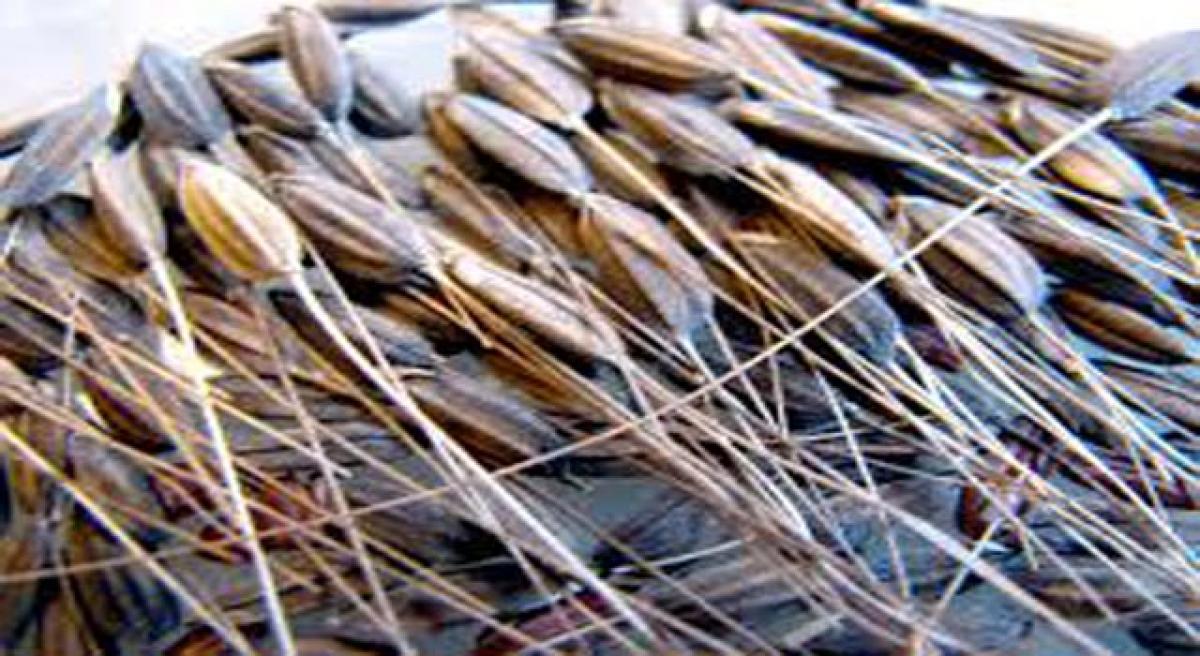Live
- Cops silence deafening noise of 100 bikes
- Guv inaugurates medical screening camp for Raj Bhavan staff
- Job fair for pharmacist roles tomorrow
- New ration cards to be issued in January
- Job mela at Masab Tank tomorrow
- New toilets facilitated for MPP school students
- Steps to safeguard natural springs gain momentum
- RWAs want officials to clear fog over SCB-GHMC merger
- Tanks, canals remain neglected despite execution of MGNREGS works
- BRS to celebrate Deeksha Diwas on Nov 29, Dec 9
Just In
Crop yield impacted by weedy infiltrators in rice strains


A new study in Nature Genetics describes an ancestry.com-type adventure that reveals the deep history of a family, including some disreputable relatives.
A new study in Nature Genetics describes an ancestry.com-type adventure that reveals the deep history of a family, including some disreputable relatives. But the family in this case is Asian rice (Oryza sativa), and the disreputable relatives are the weedy cousins of domesticated rice.Weedy rice is neither wild rice nor crop rice but rather formerly domesticated rice that has shed some traits important to people.
Adapted to human coddling, it does not grow outside of agricultural fields, but at the same time, it is not easily harvested and produces unpalatable seeds. Depending on where you are in the world, the reduction in yield of crop rice can be as high as 90 percent because of these weeds, said Kenneth Olsen, professor of biology at Washington University in St. Louis and the lead author on the paper. Even in the U.S., weedy rice is estimated to be present in 30 percent of rice fields and leads to crop losses of more than $50 million annually.
There are two major strains of weedy rice in the U.S.: strawhull and blackhull awned. (Awns are the long bristles that give some grasses a hairy appearance). Because the two weedy strains evolved independently, they provide an ideal opportunity to study the genetic basis of weediness and, particularly, whether it always arises through the same genetic mechanism.
For this purpose, a team of scientists from China and the U.S. including Washington University sequenced the genomes of 18 strawhull weeds and 20 blackhull weeds and compared them to 145 previously published genomes of crop and wild varieties of rice.
Analysis showed that: the two weeds evolved from two different crop varieties; they evolved at different stages in the domestication process; and the genetic basis for weediness differs between the strains. It also revealed that, in both cases, relatively few changes were needed to turn the crop plant into a weed. Rice, in other words, has a proclivity toward weediness. "It's easy to evolve weediness, and it has happened repeatedly," said Olsen.
"The evolution of weedy crop relatives is an under-recognized part of the domestication process," Olsen continued. "Until recently, few of those studying domestication had given much thought to these weedy doppelgangers that were just kind of persisting on the margins of fields."
When rice is planted by hand, each seedling is scrutinized and weedy ones discarded. But the adoption of mechanized, direct-seeded farming has changed the equation. "The weedy relatives look so much like the crop, they blend in and farmers don't realize they have a problem until they have a real infestation," Olsen said.
One of the most noticeable weedy traits is highly shattering seeds. "When cereal crops were domesticated, people selected against shattering because it made the grain easier to harvest, but if you're a weedy species you want to disperse seed. So with the weedy strains there's a re-emergence of seed shattering," Olsen explained.

© 2024 Hyderabad Media House Limited/The Hans India. All rights reserved. Powered by hocalwire.com






